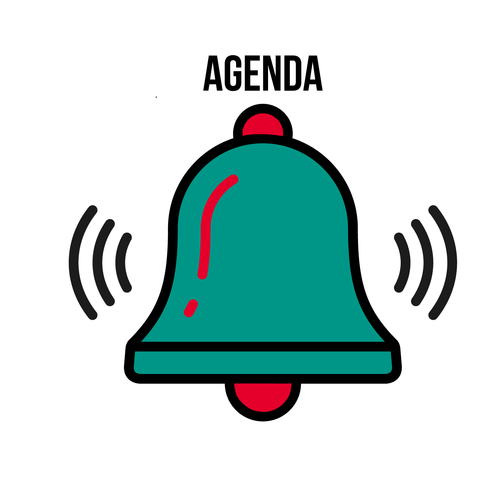5.1: Bust My Stress
- Page ID
- 2378
\( \newcommand{\vecs}[1]{\overset { \scriptstyle \rightharpoonup} {\mathbf{#1}} } \)
\( \newcommand{\vecd}[1]{\overset{-\!-\!\rightharpoonup}{\vphantom{a}\smash {#1}}} \)
\( \newcommand{\id}{\mathrm{id}}\) \( \newcommand{\Span}{\mathrm{span}}\)
( \newcommand{\kernel}{\mathrm{null}\,}\) \( \newcommand{\range}{\mathrm{range}\,}\)
\( \newcommand{\RealPart}{\mathrm{Re}}\) \( \newcommand{\ImaginaryPart}{\mathrm{Im}}\)
\( \newcommand{\Argument}{\mathrm{Arg}}\) \( \newcommand{\norm}[1]{\| #1 \|}\)
\( \newcommand{\inner}[2]{\langle #1, #2 \rangle}\)
\( \newcommand{\Span}{\mathrm{span}}\)
\( \newcommand{\id}{\mathrm{id}}\)
\( \newcommand{\Span}{\mathrm{span}}\)
\( \newcommand{\kernel}{\mathrm{null}\,}\)
\( \newcommand{\range}{\mathrm{range}\,}\)
\( \newcommand{\RealPart}{\mathrm{Re}}\)
\( \newcommand{\ImaginaryPart}{\mathrm{Im}}\)
\( \newcommand{\Argument}{\mathrm{Arg}}\)
\( \newcommand{\norm}[1]{\| #1 \|}\)
\( \newcommand{\inner}[2]{\langle #1, #2 \rangle}\)
\( \newcommand{\Span}{\mathrm{span}}\) \( \newcommand{\AA}{\unicode[.8,0]{x212B}}\)
\( \newcommand{\vectorA}[1]{\vec{#1}} % arrow\)
\( \newcommand{\vectorAt}[1]{\vec{\text{#1}}} % arrow\)
\( \newcommand{\vectorB}[1]{\overset { \scriptstyle \rightharpoonup} {\mathbf{#1}} } \)
\( \newcommand{\vectorC}[1]{\textbf{#1}} \)
\( \newcommand{\vectorD}[1]{\overrightarrow{#1}} \)
\( \newcommand{\vectorDt}[1]{\overrightarrow{\text{#1}}} \)
\( \newcommand{\vectE}[1]{\overset{-\!-\!\rightharpoonup}{\vphantom{a}\smash{\mathbf {#1}}}} \)
\( \newcommand{\vecs}[1]{\overset { \scriptstyle \rightharpoonup} {\mathbf{#1}} } \)
\( \newcommand{\vecd}[1]{\overset{-\!-\!\rightharpoonup}{\vphantom{a}\smash {#1}}} \)
\(\newcommand{\avec}{\mathbf a}\) \(\newcommand{\bvec}{\mathbf b}\) \(\newcommand{\cvec}{\mathbf c}\) \(\newcommand{\dvec}{\mathbf d}\) \(\newcommand{\dtil}{\widetilde{\mathbf d}}\) \(\newcommand{\evec}{\mathbf e}\) \(\newcommand{\fvec}{\mathbf f}\) \(\newcommand{\nvec}{\mathbf n}\) \(\newcommand{\pvec}{\mathbf p}\) \(\newcommand{\qvec}{\mathbf q}\) \(\newcommand{\svec}{\mathbf s}\) \(\newcommand{\tvec}{\mathbf t}\) \(\newcommand{\uvec}{\mathbf u}\) \(\newcommand{\vvec}{\mathbf v}\) \(\newcommand{\wvec}{\mathbf w}\) \(\newcommand{\xvec}{\mathbf x}\) \(\newcommand{\yvec}{\mathbf y}\) \(\newcommand{\zvec}{\mathbf z}\) \(\newcommand{\rvec}{\mathbf r}\) \(\newcommand{\mvec}{\mathbf m}\) \(\newcommand{\zerovec}{\mathbf 0}\) \(\newcommand{\onevec}{\mathbf 1}\) \(\newcommand{\real}{\mathbb R}\) \(\newcommand{\twovec}[2]{\left[\begin{array}{r}#1 \\ #2 \end{array}\right]}\) \(\newcommand{\ctwovec}[2]{\left[\begin{array}{c}#1 \\ #2 \end{array}\right]}\) \(\newcommand{\threevec}[3]{\left[\begin{array}{r}#1 \\ #2 \\ #3 \end{array}\right]}\) \(\newcommand{\cthreevec}[3]{\left[\begin{array}{c}#1 \\ #2 \\ #3 \end{array}\right]}\) \(\newcommand{\fourvec}[4]{\left[\begin{array}{r}#1 \\ #2 \\ #3 \\ #4 \end{array}\right]}\) \(\newcommand{\cfourvec}[4]{\left[\begin{array}{c}#1 \\ #2 \\ #3 \\ #4 \end{array}\right]}\) \(\newcommand{\fivevec}[5]{\left[\begin{array}{r}#1 \\ #2 \\ #3 \\ #4 \\ #5 \\ \end{array}\right]}\) \(\newcommand{\cfivevec}[5]{\left[\begin{array}{c}#1 \\ #2 \\ #3 \\ #4 \\ #5 \\ \end{array}\right]}\) \(\newcommand{\mattwo}[4]{\left[\begin{array}{rr}#1 \amp #2 \\ #3 \amp #4 \\ \end{array}\right]}\) \(\newcommand{\laspan}[1]{\text{Span}\{#1\}}\) \(\newcommand{\bcal}{\cal B}\) \(\newcommand{\ccal}{\cal C}\) \(\newcommand{\scal}{\cal S}\) \(\newcommand{\wcal}{\cal W}\) \(\newcommand{\ecal}{\cal E}\) \(\newcommand{\coords}[2]{\left\{#1\right\}_{#2}}\) \(\newcommand{\gray}[1]{\color{gray}{#1}}\) \(\newcommand{\lgray}[1]{\color{lightgray}{#1}}\) \(\newcommand{\rank}{\operatorname{rank}}\) \(\newcommand{\row}{\text{Row}}\) \(\newcommand{\col}{\text{Col}}\) \(\renewcommand{\row}{\text{Row}}\) \(\newcommand{\nul}{\text{Nul}}\) \(\newcommand{\var}{\text{Var}}\) \(\newcommand{\corr}{\text{corr}}\) \(\newcommand{\len}[1]{\left|#1\right|}\) \(\newcommand{\bbar}{\overline{\bvec}}\) \(\newcommand{\bhat}{\widehat{\bvec}}\) \(\newcommand{\bperp}{\bvec^\perp}\) \(\newcommand{\xhat}{\widehat{\xvec}}\) \(\newcommand{\vhat}{\widehat{\vvec}}\) \(\newcommand{\uhat}{\widehat{\uvec}}\) \(\newcommand{\what}{\widehat{\wvec}}\) \(\newcommand{\Sighat}{\widehat{\Sigma}}\) \(\newcommand{\lt}{<}\) \(\newcommand{\gt}{>}\) \(\newcommand{\amp}{&}\) \(\definecolor{fillinmathshade}{gray}{0.9}\)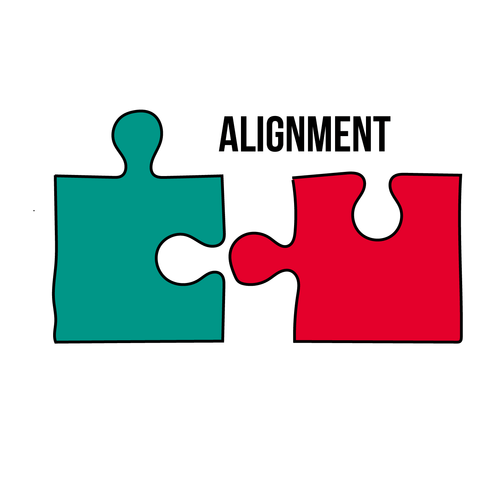
National Health Education Standards (NHES)
- 1.12.2 Describe the interrelationships of emotional, intellectual, physical, and social health when under stress.
- 7.12.2 Demonstrate a variety of healthy practices and behaviors, such as stress management, that maintain or improve the health of self and others.
Wellness Guidelines
- Decrease negative perception of challenges

- Instruction: In a group or think-pair-share format, have participants discuss the following questions. Acknowledge those who have progressed toward their goal(s) and encourage anyone who wants to change or modify their goal to get 1:1 support.
- Share: Let’s discuss our SMART Goals.
- How is it going with your current SMART goal?
- What are some ways you can improve progress toward your goal? (Grows)
- What are some ways you are doing well with progress towards your goal? (Glows)
GUIDELINE: Decrease Negative Perception of Challenges
- Share: What guideline do you think is related to today’s lesson? Who has a SMART Goal related to this guideline?
- Instruction: Select one activity.
- Guideline Popcorn: The group lists all 8 guidelines rapidly in popcorn format.
- Guideline Charades: Divide participants into groups and assign each a guideline. Each group has to silently act out the guideline for the rest to guess.
- Two Truths and One Lie:
- Truth 1: One-third of teens say that stress makes them overwhelmed and depressed and feel as though they could cry.
- Truth 2: Teens who are stressed are more likely to lay awake at night.
- Lie: The most common way for teens to manage stress is through exercise or playing sports
- Questions to discuss and/or journal:
- Who here experiences stress? Do you see stress as a challenge that is hard to overcome? How do you deal with stress?
- How do your relationships with family and friends change when you are stressed? How will your mood change if you learn how to manage your stress?
- What activities do you think could help you deal with stress in a healthy way?
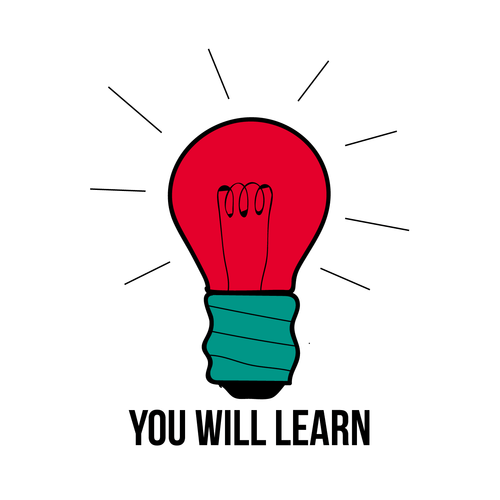
- How to respond to stressors with healthy coping strategies.
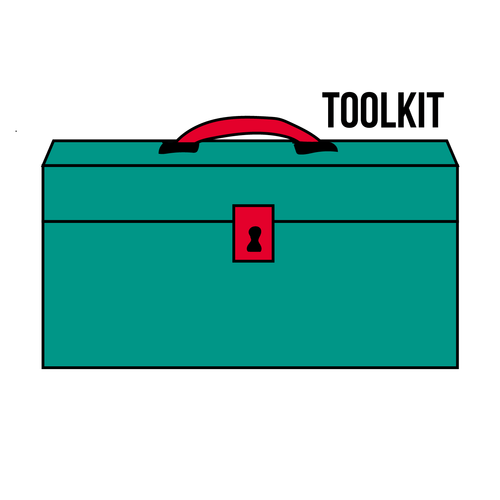
- Worksheets
- Slide presentation
- Speakers and music
- 4 Stress-Free Station Handouts (more may be needed with large groups)
- 3 x 5 cards
- Markers, crayons or colored pencils
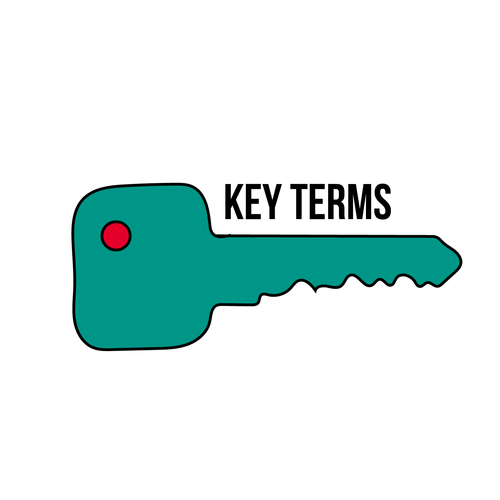
[As defined by CDC, 2015; APA, n.d.; Harvard University’s Center on the Developing Child, n.d.; MedlinePlus, n.d.; NIH, n.d.; Merriam-Webster Learner’s Dictionary, n.d.]
- Stress: A body’s reaction to any change that requires an adjustment or response. The body reacts to these changes with physical, mental and emotional responses.
- Acute Stress: Short-term stress that goes away quickly, usually associated with flight or fight response to manage dangerous situations or can happen when experiencing something thrilling or exciting.
- Chronic Stress: Stress that lasts for a longer period of time, that can harm the body, mind, and lives.
- Traumatic Stress: Stress that develops after traumatic events that are shocking and emotionally overwhelming.
- Eustress: Positive reaction stress that has a beneficial effect on your health and wellness.
- Distress: Negative reaction stress that can manifest itself through changes in behavior.
- Toxic stress: Excessive or prolonged activation of negative response systems in the body and brain.
- Cope: To deal with problems and difficult situations and try to come up with solutions.
- Resilience: The ability to overcome serious hardship and adapt well to adversity.
- Adversity: A difficult situation or condition.
- Do Now
- Acute vs. Chronic
- There’s Hope If I Can Cope
- Stress-Free Stations
- Exit Ticket
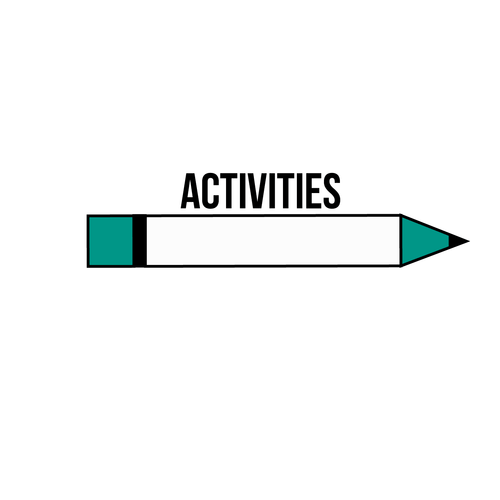
Do Now:
- Instruction:
- Have participants answer the following question on their worksheet or by sharing out loud.
- What is something that causes stress in your life that you have no control over?
- What is something that causes stress in your life that you do have control over?
- How do you respond in these stressful situations? Is it the same or different?
Good to Know: Acute vs. Chronic
Share:
- Does anyone know what stress means? It is a body’s reaction to any change that requires an adjustment or response. The body reacts to these changes with physical, mental and emotional responses.
- There is three main types of stress, acute, traumatic and chronic stress.
 Imaged created by Healthcorps staff: Ally Hoffman & Rudhi Gokhale
Imaged created by Healthcorps staff: Ally Hoffman & Rudhi Gokhale- Acute stress is the most common form of stress. It is short-term stress that goes away quickly, usually associated with flight or fight response to manage dangerous situations or can happen when experiencing something new or exciting [MedlinePlus, n.d.]. This stress can be associated with eustress, a positive reaction to stress that has a beneficial effect on health, motivation, performance and emotional well-being.
- The positive stress response is a normal and essential part of healthy development, described as increases in heart rate and mild boosts in hormone levels. Some situations that might trigger a positive stress response are the first day with a new babysitter or receiving an immunization [Harvard University’s Center on the Developing Child, n.d.
- Traumatic stress is stress that develops after traumatic events that are shocking and emotionally overwhelming [Smith, Robinson & Segal, 2018].
- Tolerable stress response activates the body’s alert systems as a result of more severe, longer-lasting difficulties, such as the loss of a loved one, a natural disaster or a frightening jury. If the activation is time-limited and buffered by relationships with adults who help the child adapt, the brain and other organs recover from damaging effects.
- Chronic stress is stress that lasts for a longer period of time, that can harm the body, mind, and lives [MedlinePlus, n.d.]. This stress can be associated with distress, a negative reaction to stress.
- The toxic stress response can occur when a person experiences, strong, frequent or persistent hardship—such as physical or emotional abuse, neglect, substance abuse or mental illness, violence or economic hardship without any support.
- This chronic activation, in turn, can increase the risk of conditions such as ulcers (damage to the gastrointestinal tract), high blood pressure, and headaches (APA, n.d.).
- Emotional tension can also cause headaches, feelings such as sadness, frustration, anxiety, and helplessness (CDC, 2015).
- However, did you know that some emotional tension or stress can also help you? You need physical tension to build a bridge, play the guitar, and to knit.
- When was the last time you were nervous but excited at the same time? Some examples can include taking a test, speaking in front of a group of people, asking someone out on a date, and watching a scary movie.
- What are examples of distress? Feeling unsafe, getting into an argument with a loved one, having too busy of a schedule, etc.
- Remember if you are in a difficult time or under a lot of chronic stress, there are resources and professionals to help you.
- American Psychology Association's Help Center: www.apa.org/helpcenter/emotional-support.aspx
- National Alliance on Mental Illness Programs: https://www.nami.org/Find-Support/NAMI-Programs
- Share:
- The Yerkes-Dodson Law shows the relationship between stress and performance.
- The “optimal level” of stress is where you can perform your best. At the “optimal level,” there’s enough stress to challenge you, but not too much stress to distress you.
 Image from: Diamond, DM, et al. (2007). The temporal dynamics model of emotional memory processing: A synthesis on the neurobiological basis of stress-induced amnesia, flashbulb, and traumatic memories, and the Yerkes-Dodson Law. Neural Plasticity: 33.
Image from: Diamond, DM, et al. (2007). The temporal dynamics model of emotional memory processing: A synthesis on the neurobiological basis of stress-induced amnesia, flashbulb, and traumatic memories, and the Yerkes-Dodson Law. Neural Plasticity: 33.Real World Relevance: There’s Hope If I Can Cope
- Share:
- Stress happens to everyone, and it can actually help you develop healthy coping strategies that build your mental resilience.
- To cope means to deal with problems and difficult situations and try to come up with solutions.
- Resilience is to adapt well to adversity, a difficult situation or condition.
- First, let’s share the common stressors or triggers of stress we experience in life, and then we can think of coping strategies as ways to respond.
- Instruction:
- As participants share answers to the following questions, record on a board, projector or flipchart paper. Share out any responses not covered by participants.
- What are some common stressors or triggers of stress you experience in your life?
- What are some healthy coping strategies?
 Image created by Healthcorps staff: Ally Hoffman & Rudhi Gokhale; Source: American Academy of Child & Adolescent Psychiatry. (2013). Stress management and teens. Retrieved From: www.aacap.org/AACAP/Families...tress-066.aspx
Image created by Healthcorps staff: Ally Hoffman & Rudhi Gokhale; Source: American Academy of Child & Adolescent Psychiatry. (2013). Stress management and teens. Retrieved From: www.aacap.org/AACAP/Families...tress-066.aspx Image created by Healthcorps staff: Ally Hoffman & Rudhi Gokhale
Image created by Healthcorps staff: Ally Hoffman & Rudhi GokhaleExamples of Coping Strategies
|
Try meditating or deep breathing exercises: deep breathing can lower our heart-rate and relieve feelings of panic. It is so helpful in moments when we’re overcome with emotion and stress (Meeks, Heit, & Page, 2011, p. 108) |
Get adequate sleep: teens need 8-10 hours of sleep each night (National Sleep Foundation, 2015). If you can’t get your 8-10 hours each night, try taking a nap during the day. |
|
Talk to a friend or trusted adult: talking out a problematic situation can help us make sense of the issue and feel more calm and confident in our strategy for overcoming it. When you’re stressed, you may feel isolated, but try to make sure you are spending time with loved ones and ask for support if needed. |
Exercise: exercise helps increase the release of endorphins, which are “feel-good” chemicals in your brain. |
|
Eat a nutritious diet: when we’re stressed we often turn to sugary, processed foods to make us feel better because they stimulate that pleasure center in our brains. However, those foods actually backfire on our bodies and our brains! They will only make us feel more stressed and more emotional because they will send our blood sugar on that crazy roller coaster. In times of stress, we need to turn to real food! Foods high in nutrients, fiber and fat will help regulate our blood sugar and stabilize our emotions. Examples include leafy greens, berries, nuts, seeds, avocados, eggs, and natural peanut butter (Bronson, 2009, p. 101). |
Positive self-talk: treating ourselves with kindness and actually saying positive things about ourselves out loud can have an amazing relieving effect on our stress levels. If we’re constantly thinking and saying negative things to ourselves, we will start to believe them! The same goes for positive things! Drowning out those negative voices with positive self-talk can improve our mood and productivity and lower our stress. |
|
Avoid excess caffeine intake: too much caffeine (such as coffee) may increase feelings of anxiety. |
Avoid illegal drugs, alcohol, and tobacco. |
|
Develop assertiveness training skills. For example, you can try to share your feelings in a firm but not overly aggressive/passive way: "I feel sad when you yell at me” or "please stop yelling.” |
Prepare for situations which cause stress: this will reduce stress by helping you practice and minimize the unexpected. For example, if you fear public-speaking, try taking a public-speaking class. |
|
Give yourself a break: learn to feel good about yourself and identify your strengths instead of demanding perfection from yourself or others. Also, taking an actual break from stressful situations by listening to music, drawing, writing, or talking with friends can reduce stress as well! |
Stay active: try taking your mind off your stress by getting yourself involved with activities, such as volunteering and joining extracurricular activities. |
Sources:
- American Academy of Child & Adolescent Psychiatry. (2013). Stress management and teens. Retrieved From: www.aacap.org/AACAP/Families_and_Youth/Facts_for_Families/FFF-Guide/Helping-Teenagers-With-Stress-066.aspx
- CDC. (2017). Coping with stress. Retrieved from: https://www.cdc.gov/features/copingwithstress/index.html
Hands-On: Stress-Free Stations
- Set Up:
- Around the room, set up Stress-Free stations with signage, written instructions (Stress-Free Station Handouts), and any other materials listed in the toolkit.
- Instruction:
- Split participants into groups.
- Each group will be assigned to begin at one station.
- After a certain amount of time, (suggest 5-15 minutes) signal (stopping of music playing, gong, whistle, etc.) groups to switch stations.
- Repeat until all the groups have visited each station.
- Prior to starting, go over the instructions for each station.
Stress-Free Station 1: Yoga
- Share:
- Does your body ever feel tense or tight? Sometimes stress can be felt in our muscles and our chest.
- One way to stop this from happening is to keep our bodies relaxed and our breath control.
- Yoga is a system of exercises to improve not only your physical health but your mental health. By practicing yoga, you can release tension in your body by holding different “asanas” (Aa-Suh-Na), or poses, and in your mind with “ujjayi” (U-JjA-Yi), or deep breathing.
- This type of breathing has two steps. First, inhale quietly through your nose, fill your lungs and exhale constricting your throat like you are fogging up a mirror.
- Today, we will be learning 4 yoga poses tree, triangle forward bend, extended side angle, and an eagle.
Stress-Free Station 2: There’s Hope If I Can Cope
- Share:
- Think about the triggers of stress and a healthy coping strategy you can use to respond to that stress.
- If you need help thinking of one, look at the printed chart and choose a coping strategy you are going to try and use next time you experience stress.
- Then create a reminder on a 3x5 card and hang it somewhere where you will see it every day like your bathroom mirror or bedside table.
Stress-Free Station 3: Visualize It!
- Share:
- One participant leads the rest of the group in the deep breathing and guided imagery exercises.
- If distracted, allow the thoughts to come in but escort them out again and refocus on your breathing and/or the story.
- Guided imagery is a stress management strategy during which one person describes a beautiful, relaxing scene while the participants sit comfortably, visualize the scene, and concentrate on taking deep comfortable breaths (Hahn, 2011, pp. 63-69).
- Check out some guided meditations on the Sahaja Meditation website: http://studentsmeditate.org/
Stress-Free Station 4: Champion vs. Critic
- Share:
- What is self-talk? We all participate in a silent, internal conversation with our selves called “self-talk.”
- This talk has two inside voices: the “inner champion” and the “inner critic.”
- The “champion” is positive, optimistic, and is a source of peacefulness, confidence, and strength.
- The “critic” is negative, pessimistic, and a source of fear, blame and doubt.
- Importantly, thoughts can affect the way we feel, and feelings can affect how we behave (NAMI, n.d.).
- Groups work to transform the self-talk to become more positive by completing the chart.
- After completing the chart, discuss the following questions as a group:
- What do you think are some common reasons for negative self-talk?
- Why is it important to think positively?
- What are ways you can focus on your inner champion and avoid your inner critic?
- Instruction:
- Possible answers for facilitators are given below.
|
Critic |
Champion |
|
“I can’t believe I made another mistake during soccer practice. I can’t do anything right.” |
“I may have made a mistake, but everyone does. Let me take it as an opportunity to learn something new.” |
|
“I don’t understand this project. It’s impossible for me to finish.” |
“This may be hard, but I can do it as long as I try. If I’m really stumped, I can also try asking my teacher/supervisor/coworkers/mentors for help.” |
|
“My friends canceled our plans again. Nobody likes me. I am all alone.” |
“They must be very busy. I should try to reach out to them to reschedule.” |
|
“There’s nothing good about me at all.” |
“I have my weaknesses, but I also have my strengths.” |
|
“There’s no point in trying. I can never eat healthy.” |
“I’ll give it another try. Maybe I can try tackling it from a different angle.” |
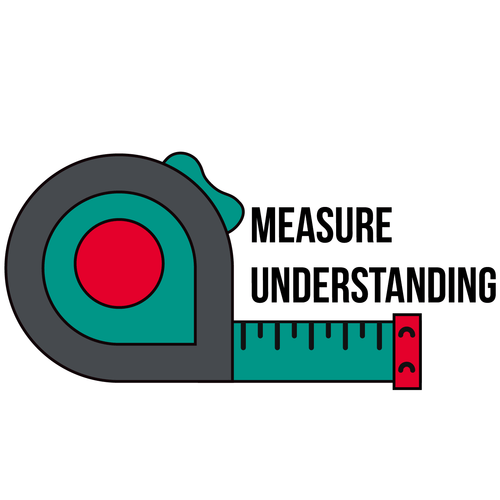
Exit Ticket:
- Instruction:
- Have participants write on their worksheet or share out loud the following question(s).
- What is one coping strategy you learned today that will use next time you feel stressed?
- What was your favorite Stress-Free Station and why?
- Have participants write on their worksheet or share out loud the following question(s).
Bibliography
- American Academy of Child & Adolescent Psychiatry. (2013). Stress management and teens. Retrieved From: www.aacap.org/AACAP/Families...tress-066.aspx
- American Psychological Association. (n.d). Stress effects on the body. Retrieved From: www.apa.org/helpcenter/stress-body.aspx
- American Psychological Association. (n.d). Resilience guide for parents & teachers. Retrieved From: www.apa.org/helpcenter/resilience.aspx
- American Psychological Association. (n.d.). Identifying signs of stress in your children and teens. Retrieved From: www.apa.org/helpcenter/stress-children.aspx
- Centers for Disease Control and Prevention. (2015). Coping With Stress. Retrieved From: www.cdc.gov/violenceprevention/pub/coping_with_stress_tips.html
- Harvard University’s Center on the Developing Child. (n.d.). Toxic stress. Retrieved From: https://developingchild.harvard.edu/science/key-concepts/toxic-stress/
- Harvard University’s Center on the Developing Child. (n.d.). Resilience. Retrieved From: https://developingchild.harvard.edu/...ts/resilience/
- Bronson, M. H. (2009). Glencoe Health. Woodland Hills, California: McGraw-Hill Glencoe.
- Diamond, DM, et al. (2007). The temporal dynamics model of emotional memory processing: A synthesis on the neurobiological basis of stress-induced amnesia, flashbulb, and traumatic memories, and the Yerkes-Dodson Law. Neural Plasticity: 33.
- Hahn, D. B. (2011). Focus on Health. Tenth Edition. New York: McGraw-Hill.
- National Sleep Foundation. (2015). National Sleep Foundation Recommends New Sleep Times. Retrieved from: https://sleepfoundation.org/press-re...ew-sleep-times
- (n.d.). Stress and your health. Retrieved From: https://medlineplus.gov/ency/article/003211.htm
- Merriam-Webster. (n.d.). Eustress. Retrieved From: https://www.merriam-webster.com/dictionary/eustress
- Merriam-Webster. (n.d.). Procrastinate. Retrieved From: https://www.merriam-webster.com/dictionary/procrastinate
- Merriam-Webster Learner’s Dictionary. (n.d.). Adversity. Retrieved From: http://learnersdictionary.com/definition/adversity
- Merriam-Webster Learner’s Dictionary. (n.d.). Cope. Retrieved From: http://learnersdictionary.com/definition/cope
- Merriam-Webster Learner’s Dictionary. (n.d.). Yoga. Retrieved From: http://learnersdictionary.com/definition/yoga
- Meeks, L., Heit, P., & Page, R. (2011). Comprehensive School Health Education, 7th edition. New York: McGraw-Hill.
- National Alliance on Mental Illness. (n.d.). Psychotherapy. Retrieved From: https://www.nami.org/Learn-More/Trea.../Psychotherapy
- A piece of Peace. (2017). Yoga Poses. Retrieved From: https://pieceofpeace.world/yoga-cards/
- Smith, M., Robinson, L., & Segal, J. (2018). Traumatic Stress. Retrieved From: https://www.helpguide.org/articles/p...tic-stress.htm
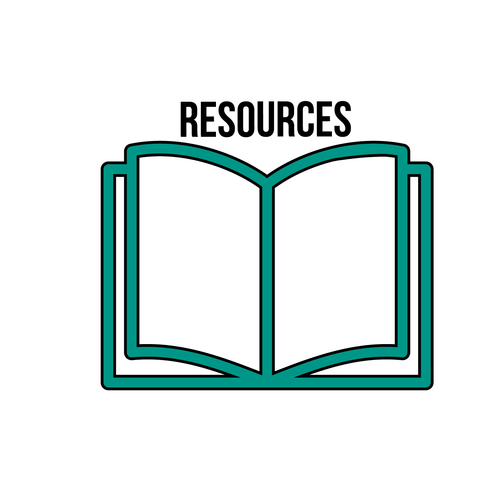
- Watch one of our coordinators teach this lesson: https://www.youtube.com/watch?v=CO64oRHDXsI&list=PLY05JxZoSB3sZBu8Z96PQXNRKEPyCIB4P&index=2
- TED-Ed. (2015). How stress affects your body. Retrieved From: https://www.youtube.com/watch?v=v-t1Z5-oPtU
This lesson was created in partnership with Albert Einstein College of Medicine Department of Epidemiology and Population Health with funding support by the National Institutes of Health NIDDK Grant R01DK097096.


